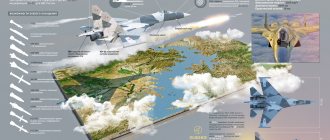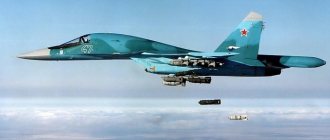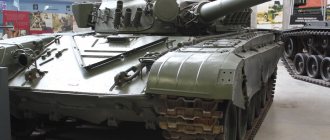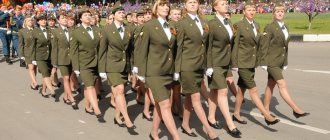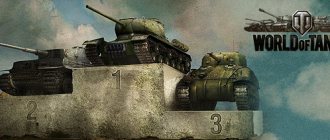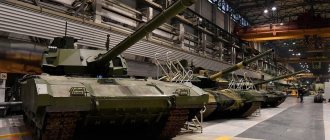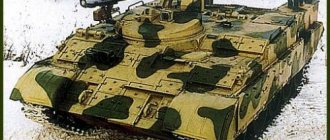The newest best military aircraft of the Russian Air Force and the world photos, pictures, videos about the value of a fighter aircraft as a combat weapon capable of ensuring “superiority in the air” was recognized by the military circles of all states by the spring of 1916. This required the creation of a special combat aircraft superior to all others in speed, maneuverability, altitude and the use of offensive small arms. In November 1915, Nieuport II Webe biplanes arrived at the front. This was the first aircraft built in France that was intended for air combat.
The most modern domestic military aircraft in Russia and the world owe their appearance to the popularization and development of aviation in Russia, which was facilitated by the flights of Russian pilots M. Efimov, N. Popov, G. Alekhnovich, A. Shiukov, B. Rossiysky, S. Utochkin. The first domestic cars of designers J. Gakkel, I. Sikorsky, D. Grigorovich, V. Slesarev, I. Steglau began to appear. In 1913, the Russian Knight heavy aircraft made its first flight. But one cannot help but remember the first creator of the aircraft in the world - Captain 1st Rank Alexander Fedorovich Mozhaisky.
Soviet military aircraft of the USSR during the Great Patriotic War sought to hit enemy troops, their communications and other targets in the rear with air strikes, which led to the creation of bomber aircraft capable of carrying a large bomb load over considerable distances. The variety of combat missions to bomb enemy forces in the tactical and operational depth of the fronts led to the understanding of the fact that their implementation must be commensurate with the tactical and technical capabilities of a particular aircraft. Therefore, the design teams had to resolve the issue of specialization of bomber aircraft, which led to the emergence of several classes of these machines.
Types and classification, latest models of military aircraft in Russia and the world. It was obvious that it would take time to create a specialized fighter aircraft, so the first step in this direction was an attempt to arm existing aircraft with small offensive weapons. Mobile machine gun mounts, which began to be equipped with aircraft, required excessive efforts from pilots, since controlling the machine in maneuverable combat and simultaneously firing from unstable weapons reduced the effectiveness of shooting. The use of a two-seater aircraft as a fighter, where one of the crew members served as a gunner, also created certain problems, because the increase in weight and drag of the machine led to a decrease in its flight qualities.
What types of planes are there? In our years, aviation has made a big qualitative leap, expressed in a significant increase in flight speed. This was facilitated by progress in the field of aerodynamics, the creation of new, more powerful engines, structural materials, and electronic equipment. computerization of calculation methods, etc. Supersonic speeds have become the main flight modes of fighter aircraft. However, the race for speed also had its negative sides - the takeoff and landing characteristics and maneuverability of the aircraft sharply deteriorated. During these years, the level of aircraft construction reached such a level that it became possible to begin creating aircraft with variable sweep wings.
For Russian combat aircraft, in order to further increase the flight speeds of jet fighters exceeding the speed of sound, it was necessary to increase their power supply, increase the specific characteristics of turbojet engines, and also improve the aerodynamic shape of the aircraft. For this purpose, engines with an axial compressor were developed, which had smaller frontal dimensions, higher efficiency and better weight characteristics. To significantly increase thrust, and therefore flight speed, afterburners were introduced into the engine design. Improving the aerodynamic shapes of aircraft consisted of using wings and tail surfaces with large sweep angles (in the transition to thin delta wings), as well as supersonic air intakes.
Military transport aviation
The main “air truck” of military aviation is the IL-76 aircraft , which has a payload capacity of up to 60 tons. About 120 aircraft are in air units, including several examples built and modified in 2010-2018.
The production aircraft with the world's highest payload capacity is the An-124 Ruslan. All 16 vehicles in service underwent modernization in 2012-2015, during which GLONASS navigation systems, chassis, fuselage elements were installed and the carrying capacity was increased.
The “pensioner” of transport aviation, the An-12, is capable of transporting up to 20 tons of cargo. Despite the fact that it was discontinued in 1973, more than a hundred aircraft remain in Russian military aviation.
The light An-26 is capable of transporting cargo weighing up to 5.5 tons, or up to 40 personnel. Produced in the USSR from 1969 to 1986. There are still more than 140 such aircraft in the Aerospace Forces and Naval Aviation.
To transport personnel and command personnel of the armed forces, military aviation uses:
- 18 Tu-154 aircraft;
- 6 IL-62M vehicles;
- 54 Tu-134 aircraft;
- 8 IL-18D aircraft;
- 27 light Czech L-410.
To replace machines that are exhausting their service life, production of the AN-148-100E, which can accommodate up to 80 people, and the AN-140-100, which can carry up to 52 people, has begun.
LO LoveOpium
August 12, 1912 is considered the Day of the Russian Air Force. During the times of the Soviet Union, they had no equal in the number of combat aircraft, when the “air shield” was supposed to reliably cover the “large fleet” of the Land of the Soviets.
In today's review of the 15 most remarkable domestic aircraft and helicopters , from the famous “Ilya Muromets” to an amazing device with a giant tank on the roof. According to Forbes magazine.
44 photos
Author Anton Trofimov, Forbes magazine
"Ilya Muromets" (1913)
The world's first passenger aircraft and the first Russian bomber. Produced: more than 80 copies.
“Ilya Muromets” (S-22) is the general name of several series of four-engine all-wood biplanes produced in Russia at the Russian-Baltic Carriage Works during 1913–1918. It was developed under the leadership of I.I. Sikorsky.
The Ilya Muromets aircraft were the basis of the bomber aviation of the Russian Empire during the First World War and became one of its symbols.
At the dawn of the history of the Air Force, the main function of aviation was reconnaissance. After the appearance of the famous “Ilya Muromets” by I. I. Sikorsky, long-range aviation began to develop. The photo shows “Ilya Muromets” from the Central Museum of the Russian Air Force in Monino. (Photo by Konstantin Vutsen):
Po-2 (U-2, 1928)
One of the most popular aircraft in the world. Produced: over 33,000 copies.
The U-2 aircraft is a typical biplane with a 100 hp engine. With. It was widely used in agriculture, communications and other fields.
With the beginning of the Great Patriotic War, the existing standard versions of the U-2 began to be converted into light night bombers. After the death of N.N. Polikarpov in 1944, the plane was renamed Po-2 in honor of its creator. It was built serially until 1953.
Created as a training aircraft for mass training of Soviet pilots during the Great Patriotic War, the Po-2 became famous thanks to the female pilots who flew it. 23 pilots who fought on the U-2 were awarded the title Hero of the Soviet Union.
(Photo by igor113):
I-16 (1933)
A symbol of pre-war aviation of the USSR, the world's first high-speed low-wing aircraft with retractable landing gear. Produced: 19,292 units.
The I-16 was the main fighter of the Soviet Air Force on the eve and during the first period of the Great Patriotic War. The last aircraft were withdrawn from service in 1952 by the Spanish Air Force, where the aircraft were supplied by the USSR during the civil war of 1938-1939.
ANT-20 "Maxim Gorky" (1934)
The largest aircraft of its time with a land landing gear. Produced: 1 copy.
The largest Soviet aircraft of the 30s, the ANT-20 Maxim Gorky, had eight M-34R engines:
Used as a propaganda aircraft, crashed on May 18, 1935 as a result of a collision with an escort aircraft.
IL-2 (1939)
The most produced combat aircraft in the history of aviation. Produced: 36,183 examples.
An attack aircraft used on all fronts of the Great Patriotic War. It is unique in that the armor of the engine and cockpit was part of the power structure of the aircraft's airframe. In addition to the USSR, it was in service with five other countries of the Warsaw bloc, where it was used until 1954.
In the Red Army, the aircraft received the nickname “Humpbacked” (for the characteristic shape of the fuselage). The designers called the aircraft they developed the “Flying Tank.”
(Photo by Konstantin Vutsen):
Yak-18 (1946)
Symbol of mass aviation of the USSR. Produced: over 4800.
The Yak-18 replaced the Po-2 as a training aircraft and was the first aircraft for almost all Soviet post-war pilots and amateur pilots involved in flying clubs.
Yuri Gagarin took to the skies for the first time on a Yak-18 in July 1955.
An-2 "Kukuruznik" (1947)
Before its appearance, the An-3 was the world's largest single-engine biplane in the history of aviation. Produced: 17,000 copies.
(Photo by Igor Dvurekov):
It was produced in the USSR and Poland (under license, supplied to the USSR), and is still produced in China (cost: about $75,000).
Il-18 (1957)
The first Soviet aircraft to be massively sold on the foreign market. Produced: 675 copies.
On May 25, 1956, a resolution was adopted by the Council of Ministers of the USSR on the creation of the Il-18 passenger aircraft with four turboprop engines.
Il-18 aircraft, due to their efficiency, level of comfort and safety, aroused interest in the world market, so many foreign companies purchased these aircraft.
In addition to the USSR, the aircraft was operated by 17 foreign airlines, and today remains in operation in four countries, not counting Russia. A monument to the Il-18 aircraft was installed at the Sheremetyevo airport terminal.
MiG-21 (1959)
The most common supersonic aircraft in the world. Produced: 11,496 copies, not counting those built under license in China.
The MiG-21 is the first Soviet second-generation jet fighter, which implies the use of missiles as the main weapon and a speed of about Mach 2. For its characteristic appearance, it was nicknamed “Balalaika” by Soviet pilots.
It was mass-produced in the USSR from 1959 to 1985, was in service with more than 40 countries, and currently remains in the air forces of 22 countries.
There is one known privately owned MiG-21: the aircraft belongs to Reginald "Rege" Finch, a former American Airlines pilot who previously served in the Royal Canadian Air Force. He purchased this aircraft in the late 1990s. and spent 3 years to bring the plane into flying condition.
Mi-8 (1961)
The most popular twin-engine helicopter in the world. Produced: more than 12,000 copies. Price: from $14.75 million to $17.5 million.
The first prototype of the helicopter took off on July 9, 1961. The Mi-8 was adopted by the Soviet Air Force in 1967 and proved to be such a successful machine that purchases of the Mi-8 for the Russian Air Force continue to this day.
Operated in more than 70 countries around the world, it is still (in various modifications) in service with the Russian Air Force and is the most popular domestic military transport helicopter.
Since the beginning of the conflict in Chechnya, Russian armed forces have lost at least 31 helicopters. Also, as a result of the Mi-8 crash, Russian governor Alexander Lebed was killed.
(Photo Andrey Zinchuk, airforce.ru):
Tu-144 (1968)
The world's first airliner to break the sound barrier on June 5, 1969 at an altitude of 11,000 meters. Produced: 16 copies.
The first flight of the Tu-144 took place on December 31, 1968, i.e. two months earlier than the flight of the famous Concorde.
The plane crossed the next symbolic milestone of Mach 2 on May 25, 1970, flying at an altitude of 16,300 m at a speed of 2,150 km/h. This aircraft combined a huge number of advanced developments and design solutions.
Commercial operation on the only Moscow-Alma-Ata line was curtailed in 1978 due to unprofitability: the cost of a flight on a Tu-144 was 1.5 times higher than the cost of a flight on subsonic airliners. (Photo by Oleg Belyakov):
Tu-154 (1968)
The most popular Soviet jet passenger aircraft. Produced: 932 copies.
The first flight was carried out on October 3, 1968. Produced in series from 1968 to 1998. Tu-154s were operated by passenger airlines throughout the socialist camp and many other countries that maintained friendly relations with the USSR. (Photo by Jan Ostrovsky):
To this day, 30 airliners make regular flights in Russia; a few examples remain in operation in other countries, including as government aircraft (Bulgaria, Poland, Slovakia, Czech Republic).
VM-T "Atlant" (1981)
A unique aircraft designed to transport units of the Energia-Buran rocket and space complexes to the Baikonur Cosmodrome. Produced: 3 copies.
For its specific appearance - the “lean” fuselage inherent to a bomber with a bulky container on the back - the VM-T received the name “flying barrel”. (Photo by Viktor Lazlo):
The cylindrical load above the VM-T fuselage is the oxygen tank of the Energia launch vehicle installed backwards in a special fairing.
Ka-50 "Black Shark" (1982)
The world's first single-seat coaxial combat helicopter. Produced: 15 copies.
(Photo by Andrey Nesvetaev):
No country except Russia uses coaxial rotorcraft in combined arms battles. (Photo by Marina Lystseva):
Despite the small number of vehicles in service, it has become one of the symbols of modern Russian aviation - thanks to its futuristic outlines and even more so after the release of the action movie "Black Shark", which gave the helicopter its unofficial name. (Photo by Sergey Alogin, airforce):
An-225 "Mriya" (1988)
The world's largest transport aircraft performing regular flights. Produced: 1 copy.
The An-225 is a six-engine aircraft. The An-225 is the heaviest cargo-lifting aircraft ever taken into the air.
"Mriya" is a record holder for the weight of cargo transported: commercial - 247 tons, commercial monocargo - 187.6 tons, and an absolute record for carrying capacity - 253.8 tons. In total, this aircraft holds about 250 world records! (Photo by Max Bryansky):
Like the VM-T, it was designed to transport the Energia-Buran rocket and space complex. Currently, one copy is in commercial operation.
Tags: holidays, Russia, airplanes, USSR, anniversary
